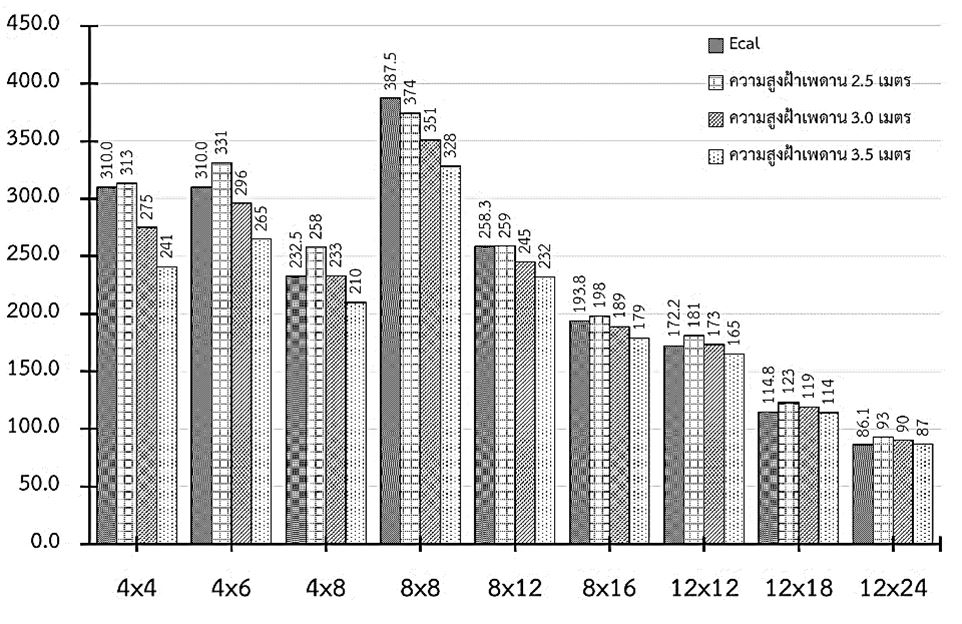Simple Lumen Method Calculations for Louver Luminaire
Main Article Content
Abstract
In practice, a chance for an architect to involve in lighting scheme for building is high. Often, the architect participation in lighting system is to distribute luminaires into space. In this study, an initial online survey was set to question various experienced architects about their involvement in lighting appraisal. The questionnaire findings suggested that the most used techniques are rules of thumb, previous experience and other comprehended techniques. In artificial lighting, a method of determining the luminaire is using a mathematical model for instance the Lumen Method. Although, the method requires not many component inputs, it is necessary to obtain data from the manufacture. Information about the room maintenance are also essential. Obtaining information in the Lumen Method is obstacle to architect’s preference. This paper goal is to examine the Lumen Method to introduce adjustments in the calculating model. The study focused on room installed with tube lamps housed in the louver luminaire. The obtained models were then used to calculate the averaged illuminance, which were then compared with the measured valves from the survey. Finally, the calculation model was again examined to derive a simpler equation. The calculation examples were shown where they can be guidance to architects. To validate the derived equation, the calculated illuminance values from the derived model were compared and contrasted with various computed illuminance values by DIALux 4.13. The results show that the simple lumen method calculations for louver luminaire are reasonable to be adopted.
Downloads
Article Details

This work is licensed under a Creative Commons Attribution-NonCommercial-NoDerivatives 4.0 International License.
All material is licensed under the terms of the Creative Commons Attribution 4.0 International (CC-BY-NC-ND 4.0) License, unless otherwise stated. As such, authors are free to share, copy, and redistribute the material in any medium or format. The authors must give appropriate credit, provide a link to the license, and indicate if changes were made. The authors may do so in any reasonable manner, but not in any way that suggests the licensor endorses you or your use. The authors may not use the material for commercial purposes. If the authors remix, transform, or build upon the material, they may not distribute the modified material, unless permission is obtained from JARS. Final, accepted versions of the paper may be posted on third party repositories, provided appropriate acknowledgement to the original source is clearly noted.
References
Baker, N., Fanchiotti, A., & Steemers, K. (1993). Daylighting in Architecture a European Reference Book. London: James and James.
Baker, N., & Steemers, K. (2001). Daylight Design of Buildings. London: James & James.
Boyce, P., & Rrynham, P. (2009). The SLL Lighting Handbook. London: The Society of Light and Lighting.
CIBSE. (2002). Code for Lighting. London: Butterworth Heinemann.
Dialux. (2016, 27 June 2016 ). Lumen Method. Knowledge Base DIALux 4. Retrieved from https://dialux4.support-en.dial.de/support/solutions/articles/9000078303-lumen-method-
Pratama, H. C., & Chaiyakul, Y. (2018). Implication of the National Standard Indonesia (SNI) on Lighting Conservation as a Basis of Architectural Design. Journal of Building Energy & Environment, 1(1), 51-57.
Pritchard, D. C. (1999). Lighting (6th ed.). Essex: Longman.
Tregenza, P. R., & Loe, D. (1998). The Design of Lighting. London: E and FN Spon.


